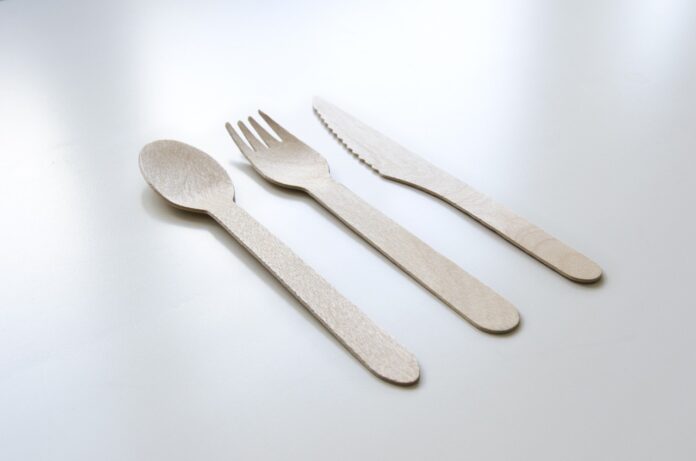To many of us, the new year represents a blank slate with plans and opportunities for change awaiting us. And our traditions invite us to make New Year’s resolutions to set our plans in motion.
Some of the earliest recorded resolutions date back nearly 4,000 years with the Babylonians promising their gods that they would repay their debts in the new year. A variety of survey polls show that Americans still list getting out of debt as one of their top five resolutions. Other popular resolutions include improved physical fitness, healthier diets, losing weight and in recent years, Americans have also resolved to improve their mental health.
Considering conservation
Would it be too much to ask that we consider natural resource conservation in our New Year’s resolutions? After all, our quality of life is predicated upon access to clean water, clean air and healthy soil to grow food. And yet, we seem unaware that our rate of consumption exceeds the sustainable use of most of our natural resources.
Possibly adding to the problem is that “conservation” is not a word that comes up frequently in conversations. We’ve lost our connection to the word and, more importantly, it seems, to the concept.
Let’s bring conservation into the new year by becoming reacquainted with the word, its meaning and why it deserves more consideration in our habits. The Oxford Language defines conservation as, “the prevention of wasteful use of a natural resource.” Wasteful is a word for which most of us can visualize a meaning. And there is no better opportunity than the holidays for us to observe firsthand the waste we generate with our beloved celebrations, festive foods and gifts.
Conservation celebration
During the holiday season (mid-November through Jan. 1), Americans generate nearly six pounds of household waste per person per day. We should certainly be able to visualize that! But we stuff it in bags, take it to the curb and see it hauled somewhere out of sight and out of mind. Americans remain the largest municipal solid waste generator per capita in the world. We can do better.
The bigger picture is that we do not limit our celebrations to the holiday season. Our celebrations are becoming more numerous and more elaborate than past generations. A poll conducted by BJ’s Wholesale Club determined that the average family hosts 7.23 celebrations annually. We celebrate multiple holidays, birthdays, graduations, weddings, showers, gender reveals, etc.
Regardless of the celebration, it has become our habit to serve our guests with single-use plastic products. There are other options. The best choice would be reusable plates, cups and cutlery at gatherings, but I don’t see that happening. So, I am asking you to consider a compromise.
As host, you have a wonderful opportunity to educate your guests without saying a word. Purchasing biodegradable products made from corn, wheat or recycled paper are a much better option. You may not be able to find matching colors or themed designs common to single-use plastic, but many of these products have a tan-flecked color that most guests will recognize as a more ethical choice.
So, could we implore you to consider “conservation celebration” as a New Year’s Resolution for each of your 2024 events?
Building success
The Harvard Business Review reports there are four steps that will help us keep our resolutions.
- Connect your goals to a “why:” Achieving goals becomes easier when they’re meaningful and connected to a reason and purpose.
2. Start small and start now.
3. Break down your goals into manageable chunks.
4. Remove obstacles before you begin: Ask yourself, “What could prevent me from accomplishing this goal?”
Why bring conservation into our celebrations? Landfills are a poor choice for land use, and they produce methane — a powerful greenhouse gas. Only 9% of the plastic generated since 1950 has been recycled.
So, if you are banking on those cute, purple plastic plates with matching flatware and cups being recycled, please know it is statistically unlikely. On the other hand, if we search for biodegradable paper products as alternatives, we are making a much better choice, especially if we compost them.
Start small
By focusing only on our celebrations, we are starting small, not shaking up our daily routines. Besides, parties already require advance planning for procuring disposable tableware, so making a better choice for these products isn’t much of a challenge.
Start now
Why not? Most of us can look ahead with reasonable certainty about how many celebrations we will host in 2024.
Break down the goals
Make a list of the items you are willing to swap out for more environmentally friendly choices.
Remove obstacles
Determine a rough count of the items you will need for 2024 celebrations and make a bulk order. Having everything on-hand will make this an easier change, and by ordering in bulk, you will likely save money as well. Online searches will offer more options.
Tip: “Chinet” is a product you can likely find at your grocer that is sturdy, compostable in your home compost, made in the USA with some pre-consumer recycled paper content and with water they clean and reuse onsite.
We think that with a little planning now, you can easily bring conservation into your 2024 celebrations. In our May article, we will continue looking at some of our celebration choices. Until then, remember, “Balloons blow — don’t let them go.” Can’t wait? Check out balloonsblow.org/.













